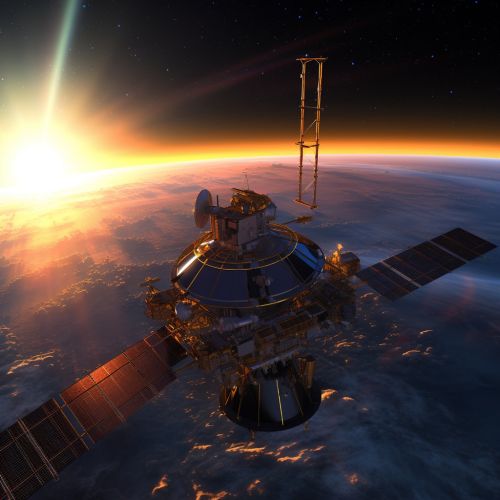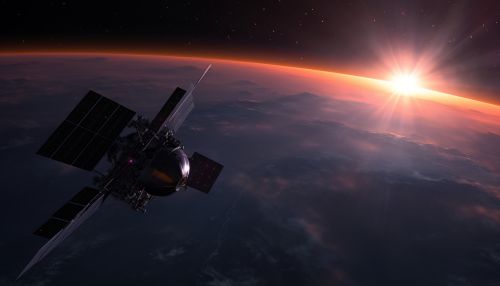Dawn (spacecraft)
Overview
The Dawn was a space probe launched by NASA in 2007 with the mission of studying two of the three known protoplanets of the asteroid belt, Vesta and Ceres. It was retired in 2018 and is currently in an uncontrolled orbit about its second target, Ceres. Dawn was the first spacecraft to visit either Vesta or Ceres, and the first to visit a dwarf planet, arriving at Ceres in March 2015, a few months before New Horizons flew by Pluto in July 2015.


Mission
The primary objective of the Dawn mission was to investigate the two most massive bodies in the main asteroid belt, Vesta and Ceres. The mission aimed to characterize the early solar system and the processes that dominated its formation. Dawn was the first mission to visit a dwarf planet and the first to orbit two extraterrestrial bodies.
Design and Development
Dawn was designed and developed by Orbital Sciences Corporation. The spacecraft's design incorporated a number of innovative features, including the use of ion propulsion, a technology that uses electric power to accelerate ions to generate thrust.
Launch and Cruise Phase
Dawn was launched on September 27, 2007, from Cape Canaveral Air Force Station in Florida. The spacecraft's cruise phase lasted for four years, during which it traveled through the inner solar system, performing gravity assist maneuvers at Mars to help it reach its targets in the asteroid belt.
Vesta Phase
Dawn arrived at Vesta in July 2011 and spent over a year studying the protoplanet. The spacecraft revealed a complex geologic history, including the presence of a large south polar basin named Rheasilvia, which is one of the largest known impact structures in the solar system.
Ceres Phase
Dawn arrived at Ceres in March 2015 and spent more than three years studying the dwarf planet. The spacecraft discovered evidence of water ice on Ceres' surface and a possible subsurface ocean, suggesting that Ceres may harbor conditions suitable for life.
End of Mission
Dawn's mission officially ended on November 1, 2018, when the spacecraft ran out of hydrazine fuel used to orient itself. The spacecraft remains in orbit around Ceres, where it will continue to reside for at least 20 years.
Legacy
The Dawn mission has significantly advanced our understanding of the early solar system. The data collected by the spacecraft has provided invaluable insights into the formation and evolution of the solar system, and has paved the way for future missions to asteroids and dwarf planets.
